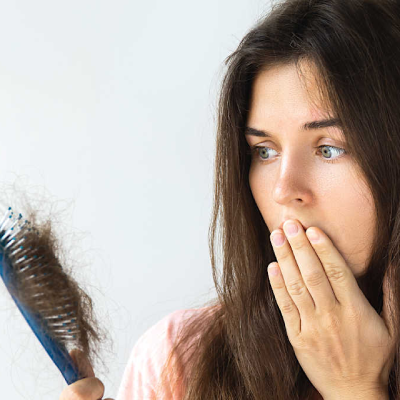Tips which aid you cope with Trichotillomania

01 October 2019

Hair Experts @ AHS

Trichotillomania is a mental health condition in which a person gets an uncontrollable urge to pull out one’s own hair. This is a hair disorder that often leads to embarrassment and shame. Trichotillomania is the result of an irresistible urge that may feel uncontrollable.
Trichotillomania is a mental health condition in which a person gets an uncontrollable urge to pull out one’s own hair. This is a hair disorder that often leads to embarrassment and shame. Trichotillomania is the result of an irresistible urge that may feel uncontrollable. Pulling hair is not a random occurrence in trichotillomania; instead, it is a behavior that usually follows explicit patterns.
In order to treat a patient who is suffering from, we must understand the condition instead of making assumptions. It’s also important to avoid judgment and practice empathy. This is a serious disorder and hence asking the patient to, “Just stop doing it,” or, “It’s just a bad habit,” are usually insensitive and unhelpful.
Help identify patterns
Sometimes it is easier for a person on the outside looking in to observe behavioral patterns. Becoming aware of the factors that result in the hair-pulling actions and behaviors that follow hair pulling can help bring clarity and insight for the person with trichotillomania. Your help in identifying patterns can also help in examining high-risk situations and triggers that can then either be avoided or coped with more efficiently.


Help brainstorm coping skills and tools to help prevent hair pulling
You can influence the patient to engage in a replacement behavior that comprises of tactile encouragement, for example picking individual threads from a piece of fabric, pressing a stress ball or using a fidget toy. If the patient wants to replace or recreate the sensation at the root of their hair, they may find that placing an icepack on the head, using a mint shampoo, or combing hair may reduce the urge to pull.
Change environmental factors, if necessary
If hair pulling usually occurs when viewing oneself in a magnifying mirror, it may be useful to remove that mirror entirely from that place. In case there are areas of the home where pulling occurs the most frequently, you could persuade the patient to write and place written reminders to avoid these behaviors in those areas.


Persuade healthier means to express and cope with difficult emotions
Finding healthy means for emotional expression may decrease the urge to pull hair. You can ask the patient to keep a journal, exercising or practising relaxation methods. These behaviors can also help in decreasing the symptoms of co-occurring mental health conditions like depression and anxiety. While it’s not obligatory that depression and anxiety will co-occur with trichotillomania, many of the strategies used to soothe the symptoms of these disorders can also be useful for someone with trichotillomania.
Choose an alternative way to express your emotions
Once you have recognized the warning signs and triggers, write a list of substitute options that you can use instead of hair-pulling. Whatever the substitute option is, it should be easy to do and easy to access. Some suggestions for alternative ways of expressing your emotions and feelings such as clearing your mind, painting, listening to music, drawing or scribbling on paper, cleaning, meditation, talking to a friend, volunteering, playing video games, etc.

End Note
If you are experiencing any type of hair loss problems and are looking for effective hair restoration treatment, the best option for you is Advanced Hair Studio. With more than 300 branches & alliances all around the world, it has been offering reliable baldness treatment for people who are going through various hair loss issues.
Stay Updated
Subscribe to our email newsletter for helpful tips and valuable resourses
Be an influencer
Join forces with Advanced Hair Studio! Explore exciting collaboration opportunities tailored for influencers. Let's redefine haircare together.
Connect now












